實現水產品穩定供應的陸上養殖技術
JSTORIES ー 完全不使用海水,在內陸環境中養殖魚類的全新技術,有望成為解決過度捕撈、海洋污染及糧食短缺問題的創新方案。目前,全球首個致力於將不易養殖的紅鮭(ベニザケ)商業化的養殖計畫,已在福島縣正式展開。
由於過度捕撈與人口增長,可供商業捕撈的天然魚類數量正在急劇減少。根據聯合國糧食及農業組織(FAO)於2022年發布的《世界漁業與水產養殖現狀報告》,全球水產資源中有超過35.4%已被過度捕撈,而約六成的資源則處於僅能勉強維持數量的臨界水平。目前,仍擁有充足漁獲配額的資源僅剩7.2%,對於擁有悠久魚貝類消費文化的日本來說,這已是一項刻不容緩的挑戰。
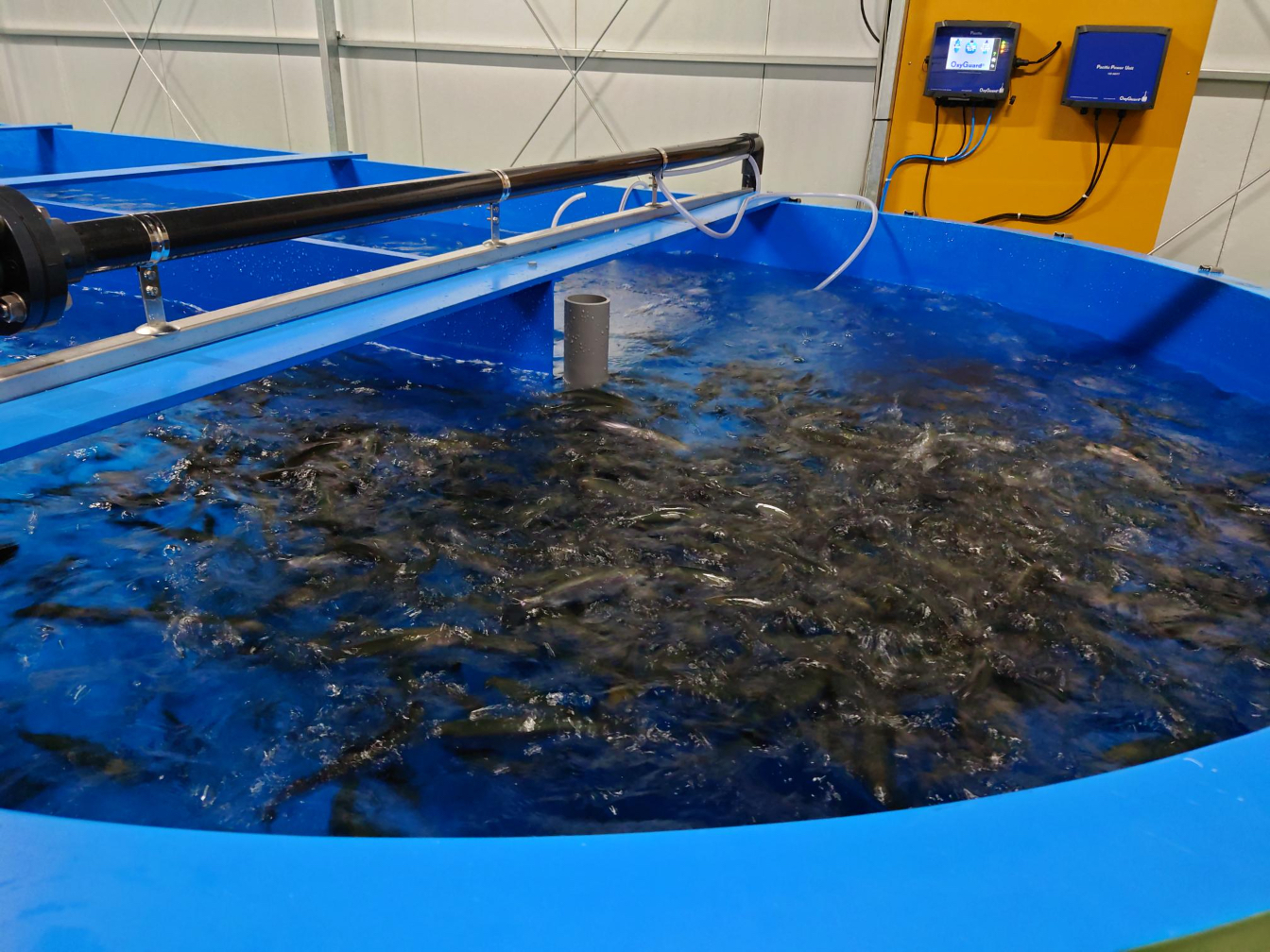
魚類養殖的方法有許多種類,其中較為常見的方式包括海上養殖,以及將海水或地下水抽取至陸上水槽進行養殖的「掛流式養殖」。然而,這些傳統的養殖方式在環境層面存在較大的問題。「無論是海面養殖還是掛流式養殖,這些方式都會使用天然水源,而當水質變得污濁後,往往直接排放回自然環境,對生態造成極大的負擔。相比之下,完全閉鎖式養殖能夠透過持續過濾,使水質保持潔淨並反覆利用,因此更具環保優勢。」在接受JSTORIES 採訪時,NTT 東日本的負責課長越智鐵美先生如此解釋道。
使用人工海水,可在內陸地區建設養殖設施
「完全閉鎖循環式陸上養殖」系統的優勢不僅僅體現在環境層面。由於不依賴海水的持續供應,該技術使得養殖設施不再受限於沿海地區,可在內陸地區建設。只要有自來水供應,便可在任何地方設立養殖場,大幅擴展水產養殖的可能性。
「由於水可以持續循環利用,極端來說,即使是在沙漠的正中央,也能夠養殖海魚。此外,農民在農作物的非生產季節,也可以利用這項技術進行魚類養殖。這種不受地理條件限制的特性,是該系統的一大優勢。」(越智氏)
與市場上常見的虹鱒鮭(Trout Salmon)等品種不同,紅鮭(ベニザケ)因為對水溫變化敏感、易受壓力、容易感染疾病等因素,被認為不適合養殖。 至今,全球尚無成功養殖紅鮭的案例。
然而,在這次的實證實驗中,透過對養殖設施內的水溫進行精密調控,不僅大幅降低了魚類遭受寄生蟲與疾病侵害的風險,還成功克服了紅鮭養殖的另一大難題——成長速度緩慢的問題。最終,該技術實現了全球首例達到商業規模的紅鮭養殖,開創了水產養殖的新里程碑。
這一突破得以實現,關鍵在於岡山理科大學山本俊政副教授所開發的人工海水「好適環境水」。好適環境水是在純水中加入鈉(Na)、鉀(K)、鈣(Ca)這三種對魚類生長至關重要的電解質,其鹽分濃度遠低於海水。這種特殊環境能夠加速魚類生長,使其成長速度超過自然環境中的海水養殖。在2023年1月開始的實證實驗中,該技術成功將天然紅鮭的生長周期從傳統所需的4年縮短至1年半,大幅提升養殖效率。
「魚類的大部分能量都被用於調節體內的鹽分濃度,因此,透過使用鹽分濃度降低至三分之一的『好適環境水』,魚類能夠將更多能量用於生長,從而加快成長速度。」
「目前這仍處於實驗階段,但紅鮭在好適環境水中的生長速度約為海水環境的2倍,養殖周期可縮短至原來的一半。因此,運營成本也能相應減少50%。」(越智氏)
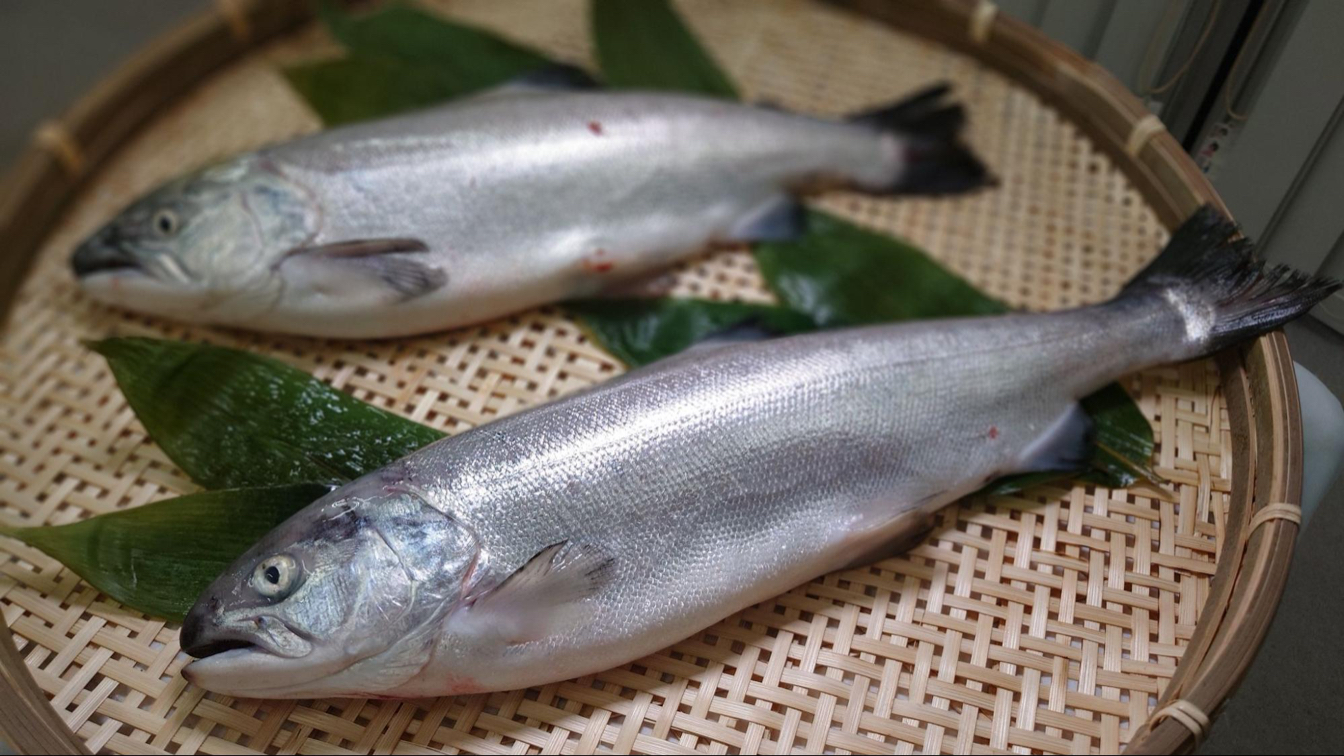
在「完全閉鎖循環式陸上養殖」系統中培育的紅鮭,於今年7月在福島市的超市進行為期3天的試驗銷售。此次試驗銷售面向一般消費者,紅鮭以可生食的大型切片、壽司、魚肉三明治等多種形式販售。透過實際銷售,該計畫不僅限於生產階段的評估,還進一步檢驗水產品在收穫後的加工、流通與市場接受度,為未來的商業化鋪路。
「(根據過去的研究)我們發現,這種紅鮭的胺基酸(鮮味成分)含量比天然紅鮭更高。而這次,我們首次親手養殖並在出貨時品嚐,結果幾乎所有人,包括記者在內,都認為這款紅鮭味道極佳,獲得了非常高的評價。」(越智氏)
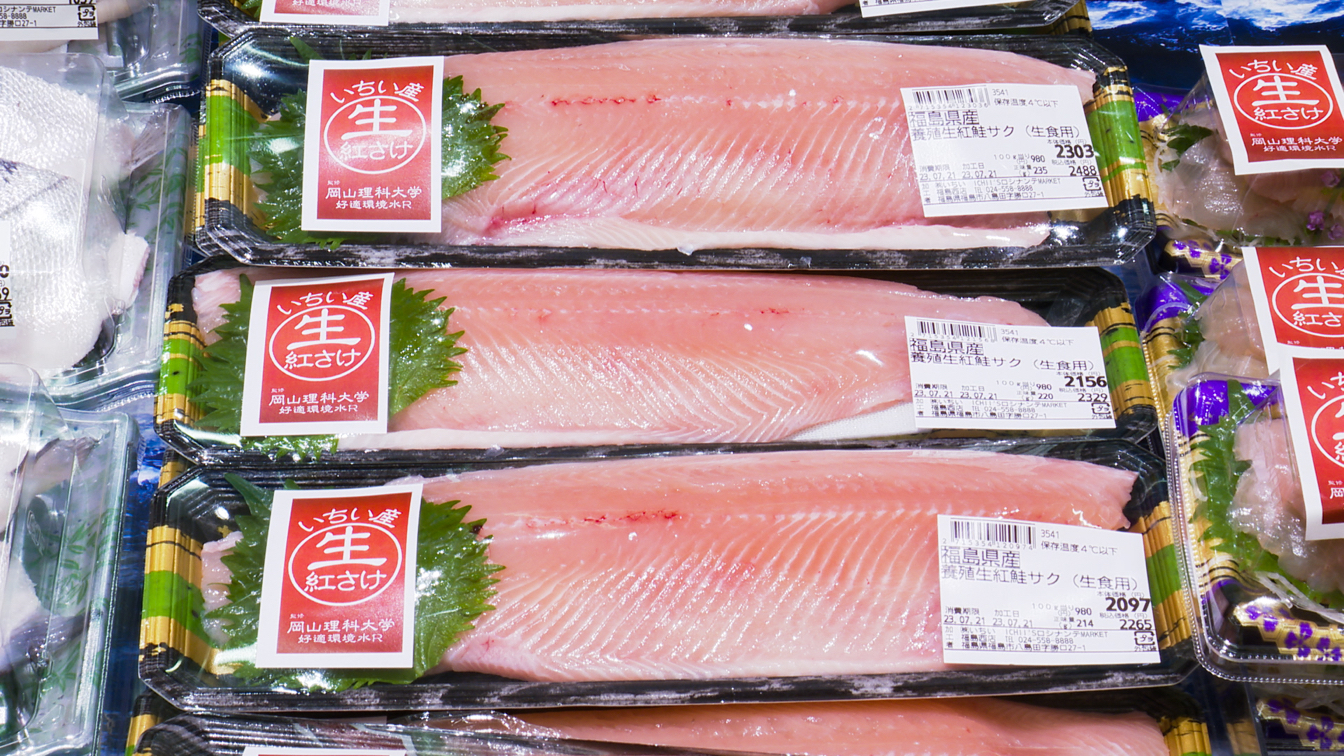
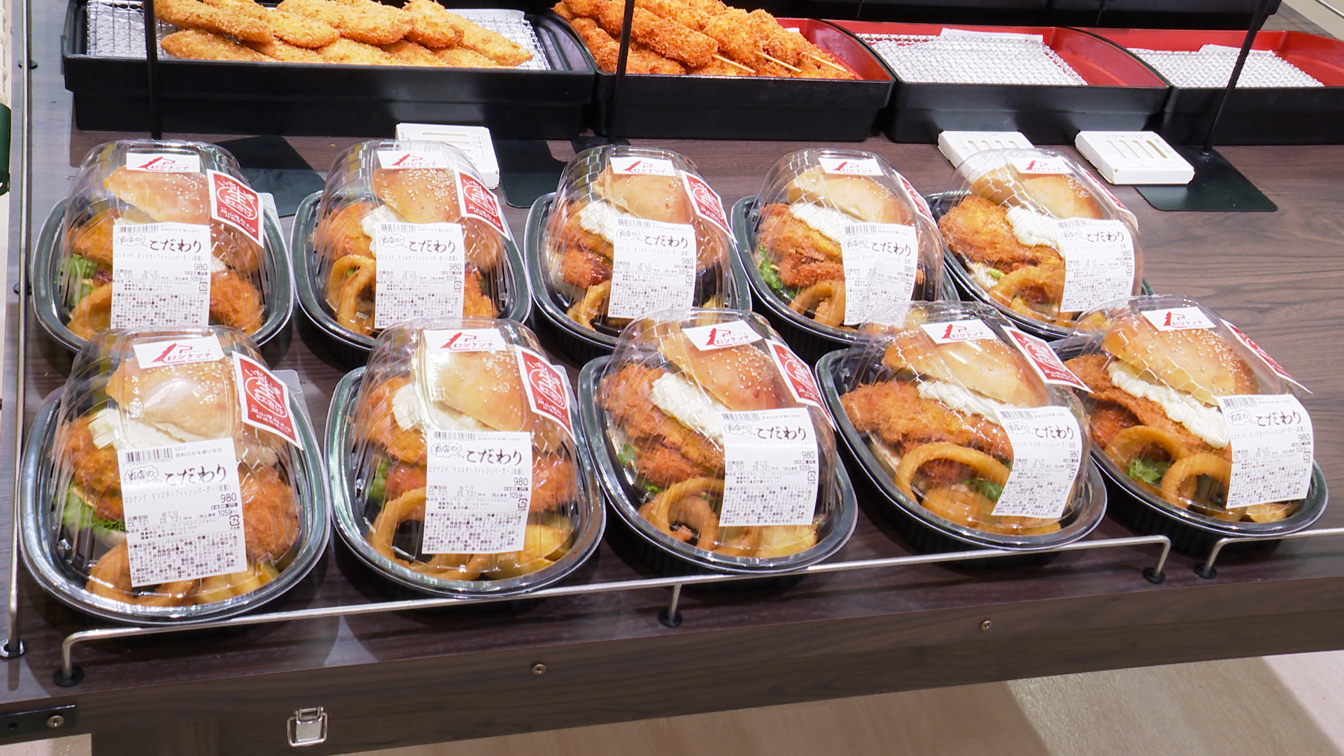
創造就業機會,振興地方經濟
這項突破性的計畫不僅著眼於環境永續性與生產效率,還被寄予厚望,希望能夠創造新產業,進一步振興地方經濟。目前,紅鮭養殖設施設立於內陸地區的福島市,並聘用當地員工參與養殖作業,為當地創造就業機會。
與自然漁業不同,養殖產業不受季節影響,能夠全年穩定提供就業機會。此外,該計畫正與福島當地政府合作,探討利用廢校校舍改建為新的養殖設施,進一步推動地方產業發展與資源再利用。
「從歷史上看,漁業一直未被視為一種穩定的職業,而這種情況至今仍未有太大改變。」(越智氏)
「我們正面臨一個將漁業轉變為能夠穩定獲利的產業的機會。我希望能夠讓從事這項產業的人們懷抱夢想,讓這成為一個充滿希望的職業。」(越智氏)
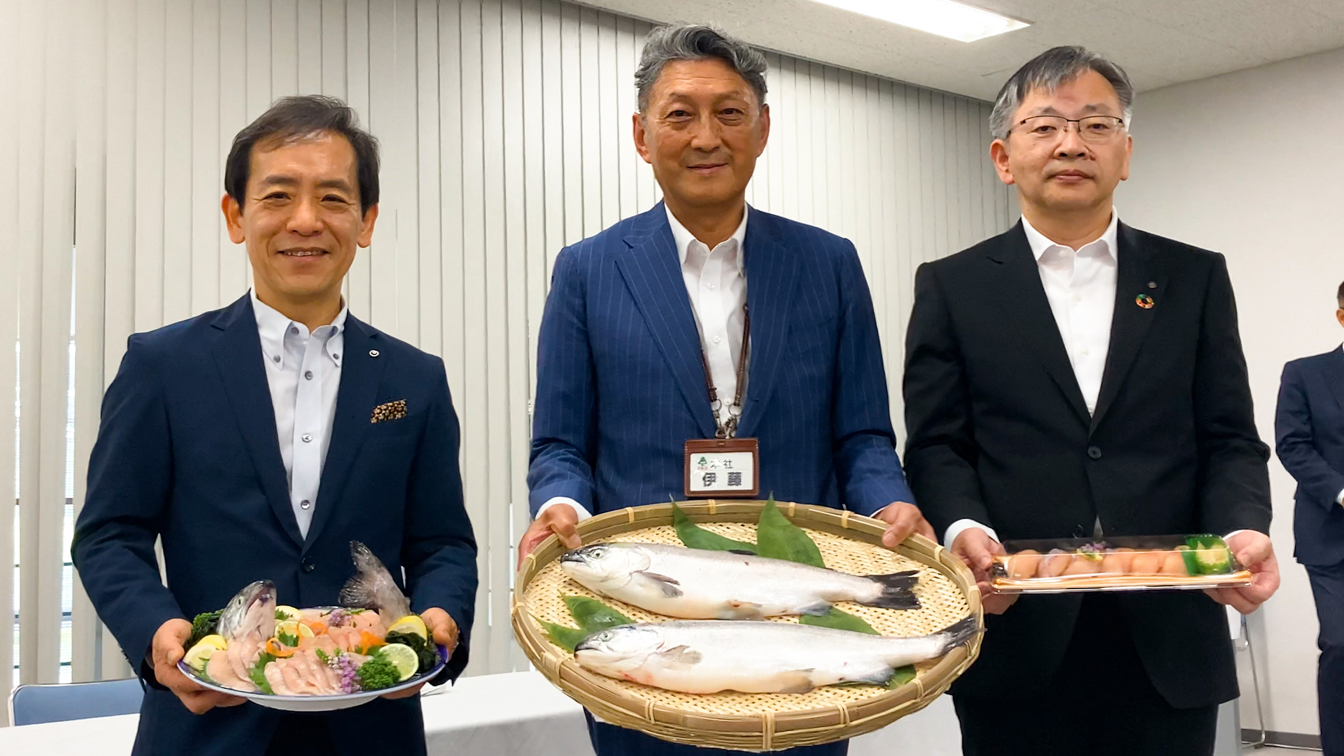
福島的第一產業不僅受到2011年東日本大震災及其後的海嘯與核電事故的衝擊,近期更因通貨膨脹與日圓貶值等經濟因素影響,面臨嚴峻的挑戰。
「我們選擇紅鮭的原因,是因為它的稀少性極高,且目前全球尚無成功的養殖案例。由於紅鮭具有極高的品牌化潛力,我們期待能將其發展為當地的特色產品,進一步推動地方產業創生,最終帶動當地就業機會的增加。」(越智氏)
越智氏強調,該養殖設施已全面落實自然災害防範措施,確保即使發生強震或颱風等災害,設施仍能保持穩定運作,不會受到嚴重損害。
另一方面,目前面臨的主要挑戰是價格競爭力。由於該養殖設施的建設與運營成本較高,在試驗銷售時,養殖紅鮭的價格為每100克980日圓,約為日本市場上一般鮭魚價格的兩倍。
此外,目前該養殖設施仍需依賴遠端監控,由岡山理科大學的專家進行管理。透過水質感測器收集的數據會經由雲端傳輸至岡山,然而,在緊急狀況下能否及時應對仍是一大挑戰,有待進一步改善。
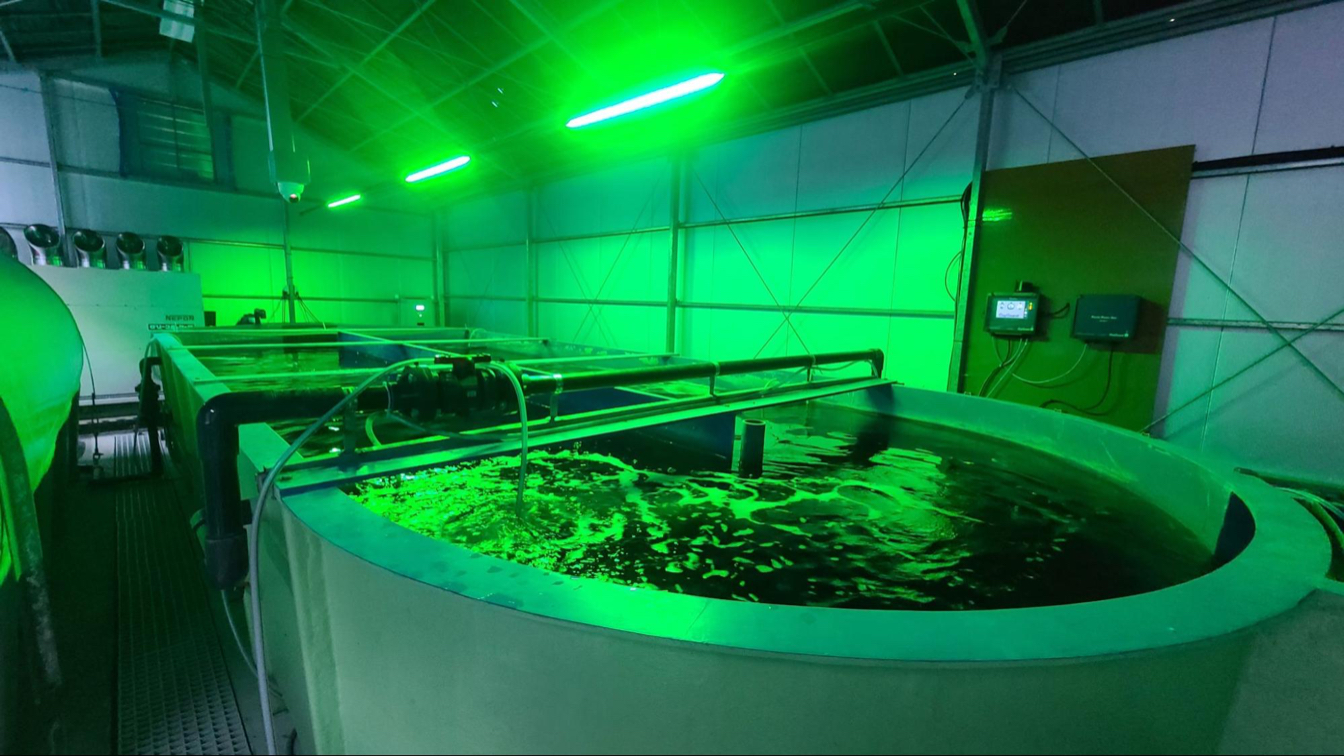
為了克服這些挑戰並實現穩定的商業化,提升養殖產量已成為研究團隊未來最重要的目標之一。
魚類的未來?透過基因編輯技術進行品種改良
在這樣的背景下,NTT與京都大學創立的初創企業「Regional Fish」合作,共同成立了新公司「NTT Green & Food」。該公司的目標是透過基因編輯技術進行魚類品種改良,以進一步縮短生長周期、增加可食用魚肉的比例,提升水產養殖的效率與經濟價值。
該項目中採用的技術與創新,結合全球日益普及的循環型養殖系統,已經對當前的漁業現狀產生了重大影響。目前,全球市場上消費的魚類超過一半已來自養殖。未來,魚類或將逐漸演變為一種工業化產品,經過基因改造,並與農作物或家禽養殖方式類似,以「最大化產量」為目標進行培育。這樣的時代可能即將來臨。
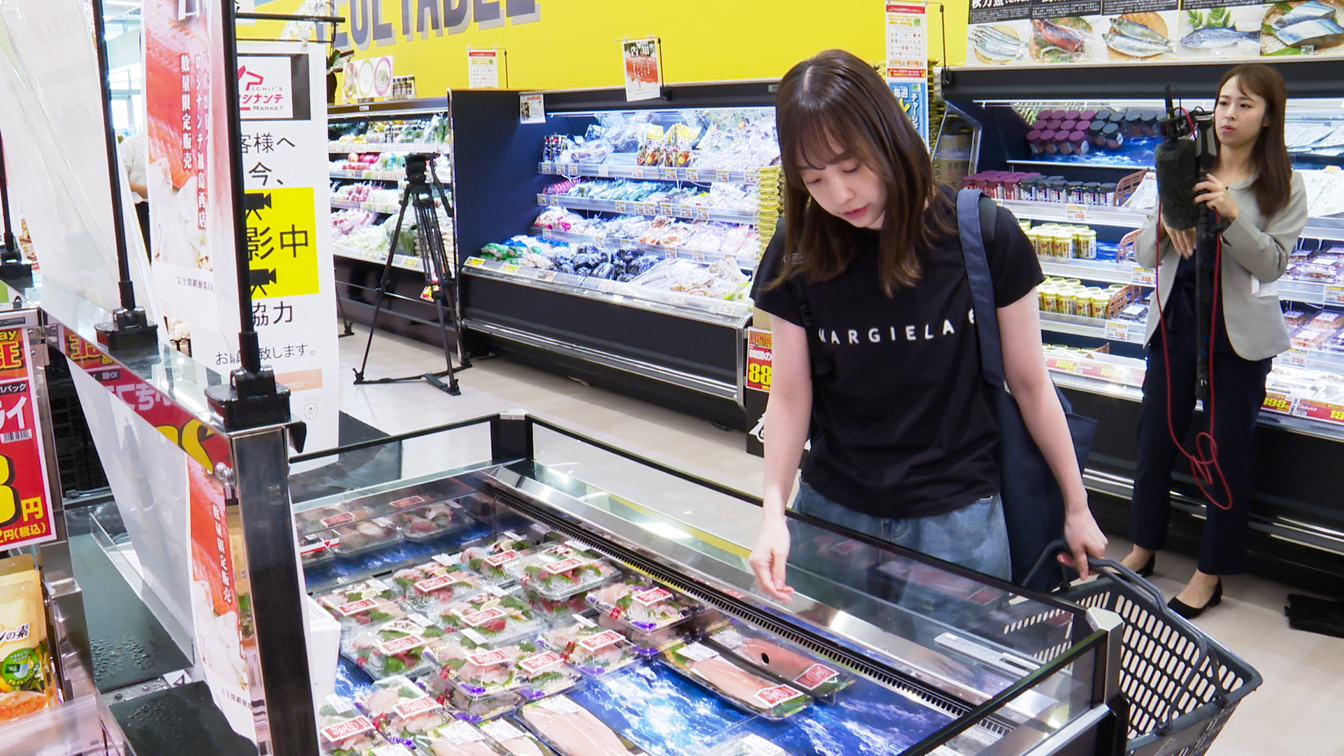
「中國、印尼等人口不斷增長的國家,對魚類的需求也在迅速上升,因此,全球剩餘的水產資源基本上只會越來越少。如果我們希望**與自然共存,並將漁業資源留給下一代,那麼我們就必須開始思考如何自行生產供自己食用的魚類。然而,若生產方式對環境造成負擔,就難以長期持續發展,因此,開發對環境友善的技術至關重要。」(越智氏)
文章作者:法拉・賽義(Farrah Seyiji) 編輯:一色崇典
首圖提供:NTT東日本
關於本文章的諮詢,請聯繫:jstories@pacificbridge.jp
***
本文章的英文版請點擊此處查看。




_bigthumbnail.jpeg)











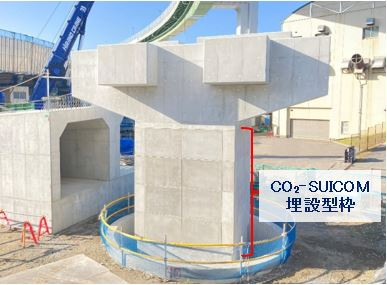


![[PODCAST] 如何打造成功的新創企業社群(第2集)](https://storage.googleapis.com/jstories-cms.appspot.com/images/1748493203370business-man-holding-light-bulb-social-network-2024-10-31-22-37-36-utc_smallthumbnail.jpg)


